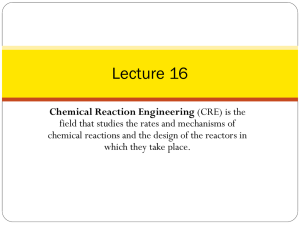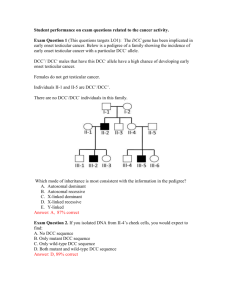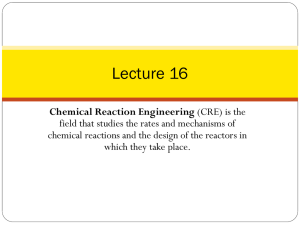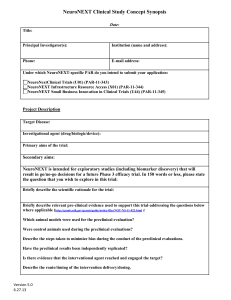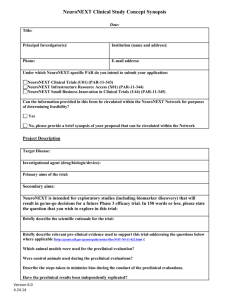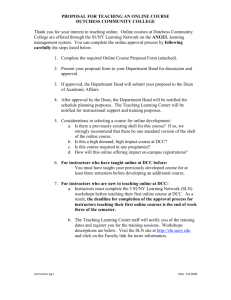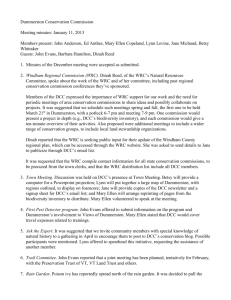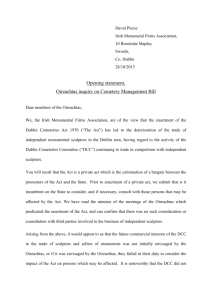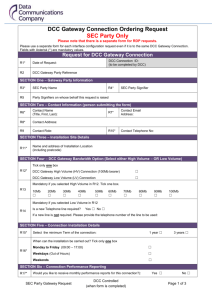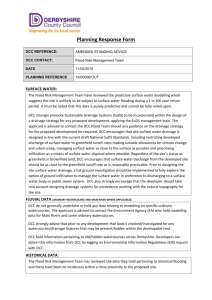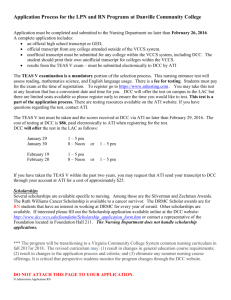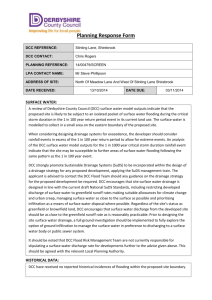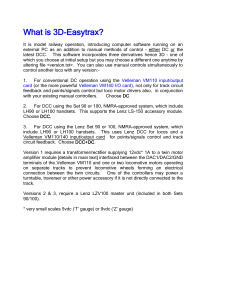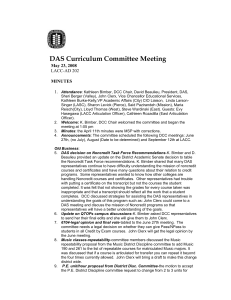Lec16_non
advertisement
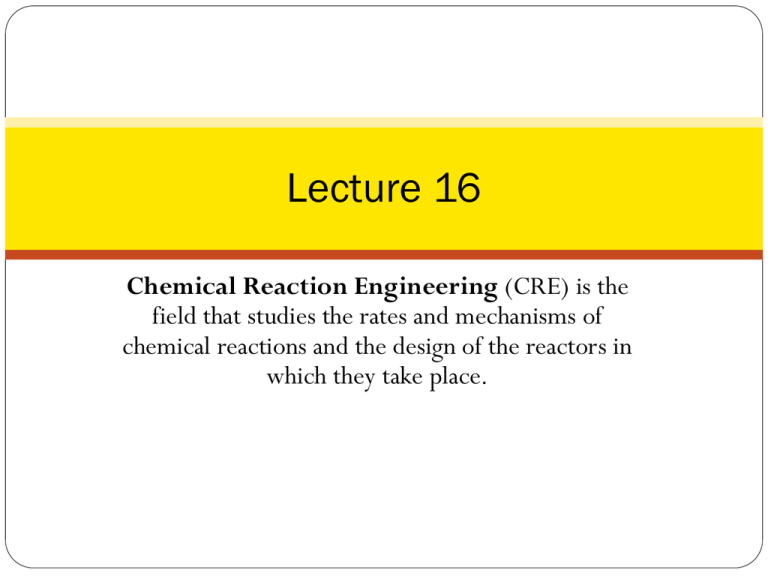
Lecture 16 Chemical Reaction Engineering (CRE) is the field that studies the rates and mechanisms of chemical reactions and the design of the reactors in which they take place. Web Lecture 16 Class Lecture 25 – Thursday 4/14/2011 Bioreactors Monod Equation Yield Coefficients Washout 2 A given enzyme can only catalyze only one reaction. Urea is decomposed by the enzyme urease, as shown below. HO 2 NH2CONH2 UREASE 2NH3 CO2 UREASE H O 2 S E P E The corresponding mechanism is: k1 E S E S Michaelis Menten Equation E S E S VmaxS rP rS KM S k2 E S W P E k3 3 rP rS Nutrient (S) + KM S cells rg max 4 VmaxS more cells + Products CC CS K S CS 5 6 7 inoculum t=0 time 8 Cells + Substrate More Cells + Product a) Phases of Bacteria growth: I. Lag II. Exponential III. Stationary CC CS b) Monod growth rate law: r g max Lag Phase lnCc K S CS Stationar y Phase Death Phase Exponential Growth Phase 9 0 time IV. Death Accumulation = [In] - [Out] + [Growth] - [Death] dCC V v0CC 0 v0CC Vrg Vrd dt Let D v0 / V dCC 1 D(CC 0 CC ) rg rd dt 10 dCC 1 D(CC 0 CC ) rg rd dt 2 dCS D(CS0 CS ) rS dt Rate Laws: 3 maxCS rg kOBS CC K S CS CP 1 * CP n 4 kOBS 11 Cp*= Product Concentration at which all metabolism ceases m ass of new cells form ed Y 'C S m ass of substrateto producenew cells Y 'P S 5 12 1 Y 'S C Y 'C S m ass of product form ed m ass of substrateconsum edto form product mass of substrate consumed for maintainence m mass of cells time rS rgYS C rPYS P mCC rS rgY 'S C rPY 'S P mCC Can’t separate substrate consumption used for cell growth from that used for product formations during exponenial growth. rS rgY 'S C mCC (grams of substrateconsumed) Y 'S C (grams of cells produced) 13 Volume=V v0 CS0 v CC CS V=V0 1) Mass balance: 14 dC C V 0 v0CC rg rd V dt (cells) 15 dCC V 0 v0CC rg rd V (cells) dt dCS V v0CS 0 v0CS rSV (substrate) dt 1 v0 D (dilution rate) V dCC 1 DCC rg rd dt dCS 2 DCS 0 CS rS dt dCP 3 DCP rP (product) dt 2) Rates: 4 rg 5 KOBS maxCS k S CS CC KOBS CP n 1 * CP 6 rP YP /C rg 7 rS YS /C rg m CC 8 rD kD CC 3) Parameters: max , CP* , n, k S , k D , yS / C , yP / C , m, D, CS 0 16 m v0CC , m p v0CP , v0 DV , V 1.) d(CC)/d(t)=-D*CC+(rg-rd) 2.) d(CS)/d(t)=-D*(CS0-CS)-Ysg*rg-m*CC 3.) d(CP)/d(t)=-D*CP+YPC*rg 4.) rg=(((1-(CP/Cpstar))**0.52)*mumax*(CS/(KS+CS))*CC 5.) D=0.2 6.) kd=0.01 7.) rd=kd*CC 8.) CS0=250 9.) YPC=5.6 17 10.) m=0.3 11.) mumax=0.33 12.) YSC=12.5 13.) KS=1.7 1. Steady State - Neglect Death Rate and Cell Maintenance 2. Cell 18 0 DVCC rgV maxCS DCC rg CC CC K S CS maxCS D K S CS DK S CS max D 3. Substrate 0 DCS 0 CS V rSV DCS 0 CS rS YS / C rg YS / C DCC DKS CC YC S CS 0 CS YC S CS 0 max D 19 CSTRWashout CC 0 m c v0CC DC C V V CC CC DKS DCC DYC S CS 0 max D D DW Washout dilution rate 20 maxCS 0 DW K S CS 0 How does this figure relate to drinking a lot of fluids when you have an infection or cold? DCC maxCS0 DW K S CS 0 D maxprod 21 Dmaxprod DW K S max 1 K S CS0 D 22
